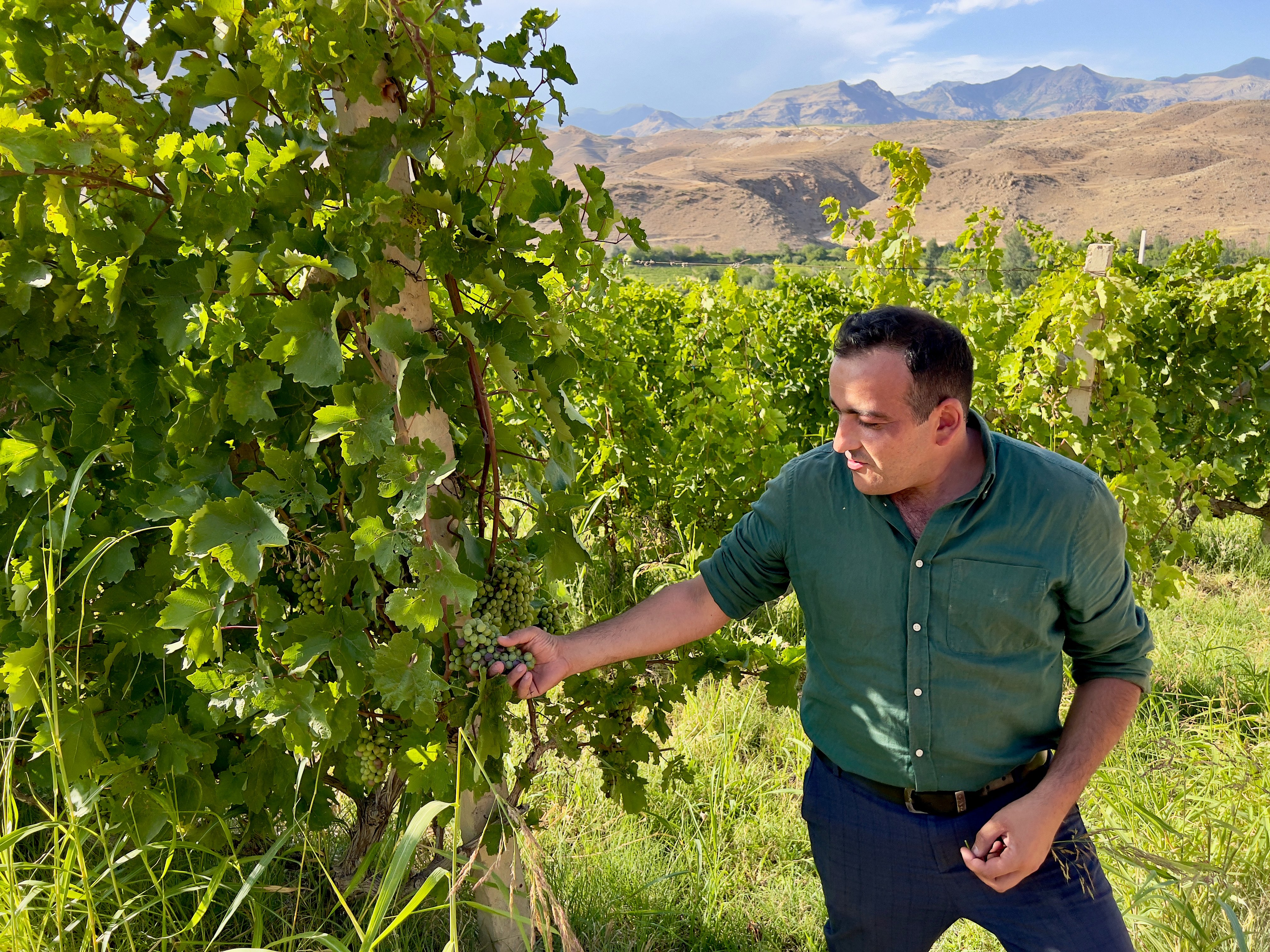
- The earliest evidence of winemaking anywhere is in Armenia. After 70 years of Soviet rule, a new generation is reviving old techniques to make wine afresh
Mount Ararat is the national symbol of Armenia, but of particular importance to the country’s winemakers. Legend has it that as the biblical flood receded, Noah’s ark made landfall atop the cone of this extinct volcano, and Noah eventually descended to plant the first grapevines.
But over the centuries, the neighbouring Ottoman, Persian, Russian and subsequently Soviet empires nibbled at Armenian territory or sometimes swallowed it up altogether, and the once again independent country’s beloved symbol is now just across the border, in modern-day Turkey.
On the drive southeast from Armenia’s dignified capital of Yerevan to the winemaking province of Vayots Dzor, Ararat’s white cap becomes visible long before its darker lower slopes, and appears to hover over a landscape whose high points are dotted with the domes of ancient monasteries, and whose hillsides are sometimes striped with vines, brilliant against the arid red landscape.
The Bible reports that Noah made the first wine, drank it to excess, and passed out. Whether he existed or not, there’s certainly archaeological evidence of winemaking at Vayots Dzor that would not only predate him but is the earliest yet found anywhere.
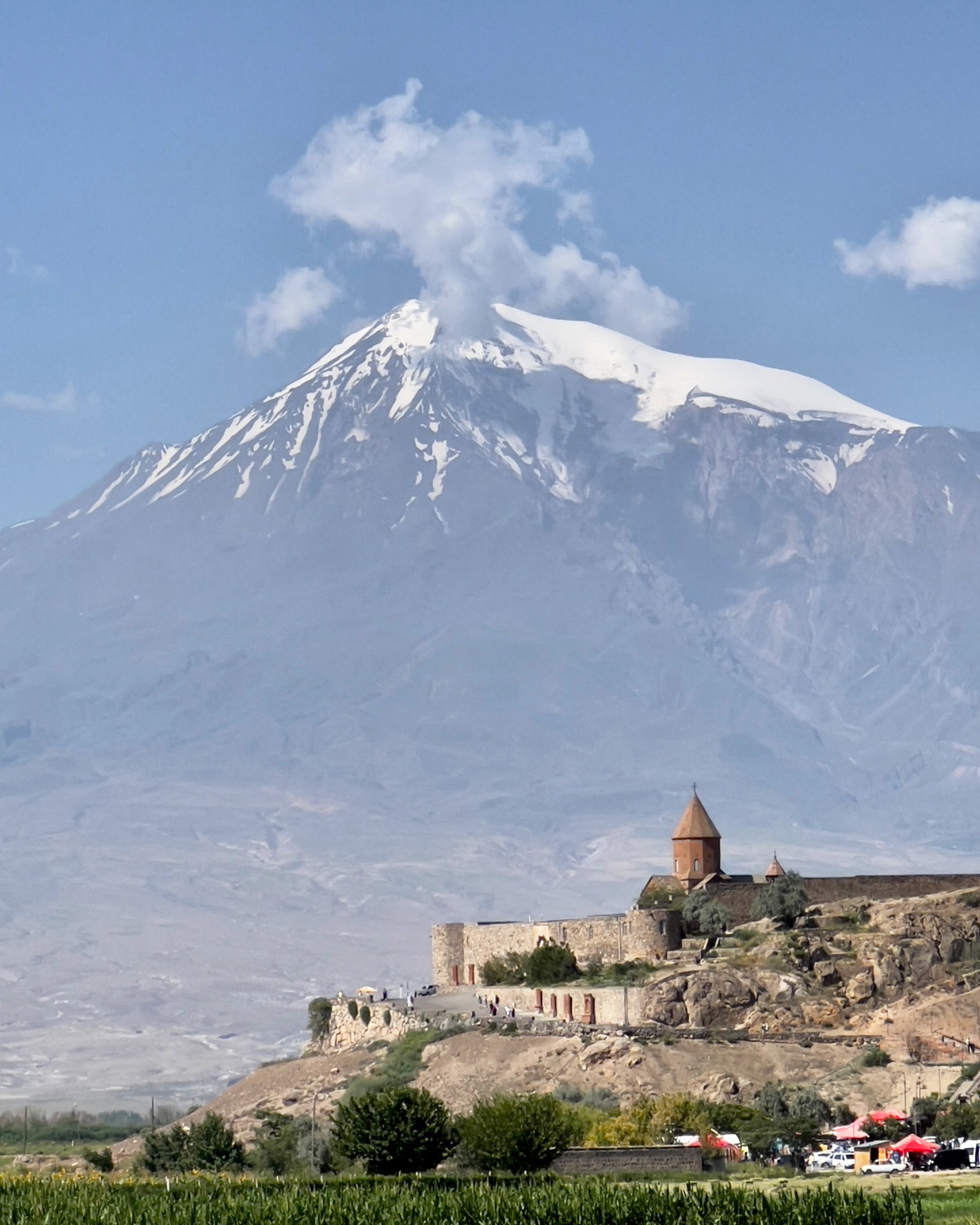
Today, the small producers of the region invite visitors to more restrained wine consumption, often paired with excellent food, with welcoming, comfortable bed and breakfast accommodation also available.
And the chances are some of the wine you taste will be made from Areni grapes, whose DNA differs little from that in 6,100-year-old wine residue found in the nearby Areni-1 cave. This is reached on a winding road through apricot orchards and up the narrow Noravank Canyon, where there’s a short climb to an entrance beneath wheeling swallows.
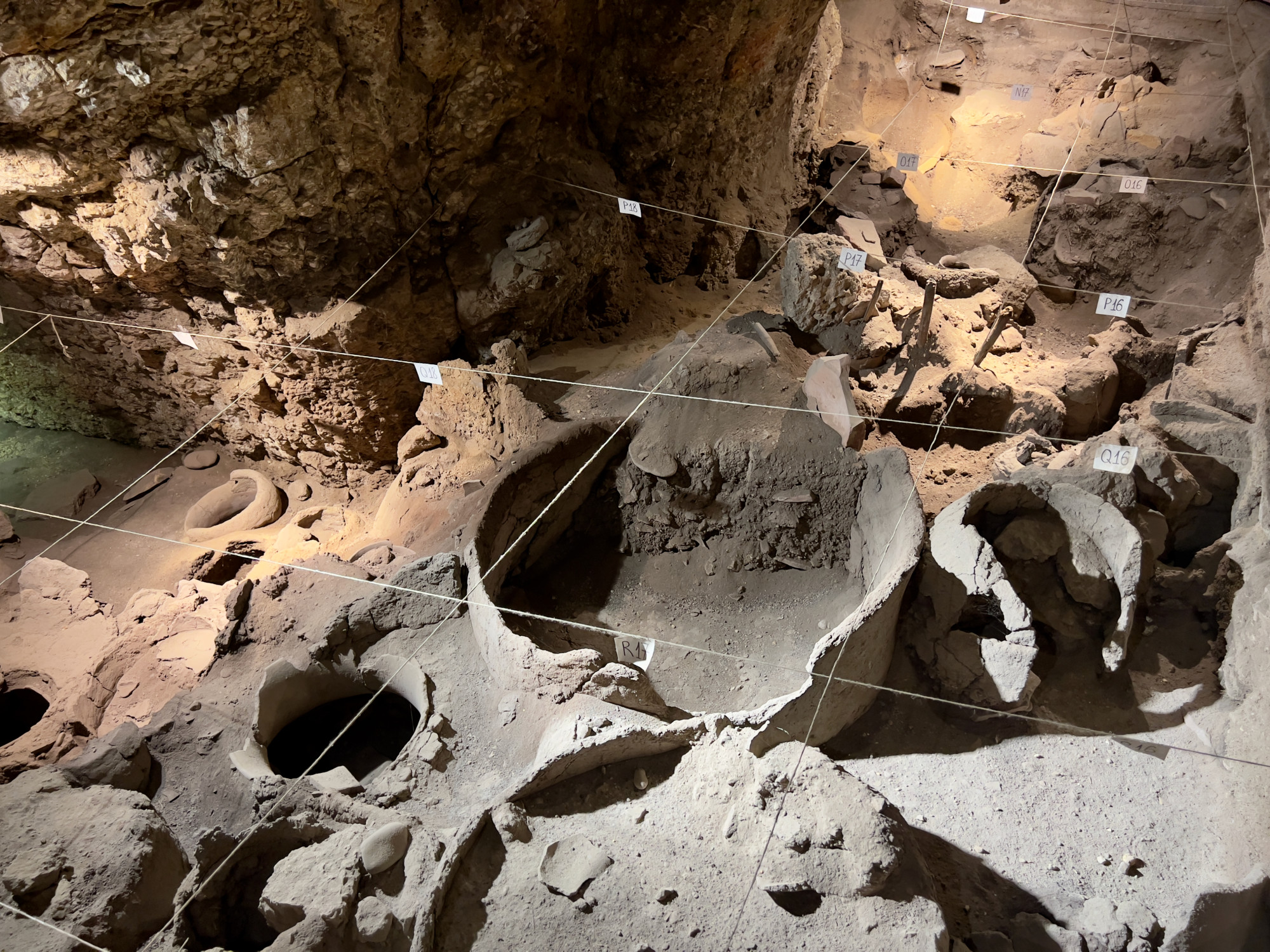
This leads to two main bat-haunted chambers, where archaeologists have found evidence of occupation from as early as 1.5 million years ago, including assorted fabric fragments, Persian silver coins and the world’s oldest shoe – a 5,500-year-old women’s slip-on of goat leather, size 37, tidily stuffed with grass, perhaps to help it keep its shape.
A walk deep into the interior along narrow boards, occasionally ducking beneath low ceilings, leads to a collection of large baked and unbaked pots, called karases, buried in the ground save for their circular mouths, beneath a neat grid of archaeologists’ string.
These were where, as far back as the 5th century BC, wine was fermented and stored, the mouths of the vessels sealed with stones. The giant buried jars could hold only perhaps 100 litres altogether, the wine being for ceremonial purposes, not everyday consumption.
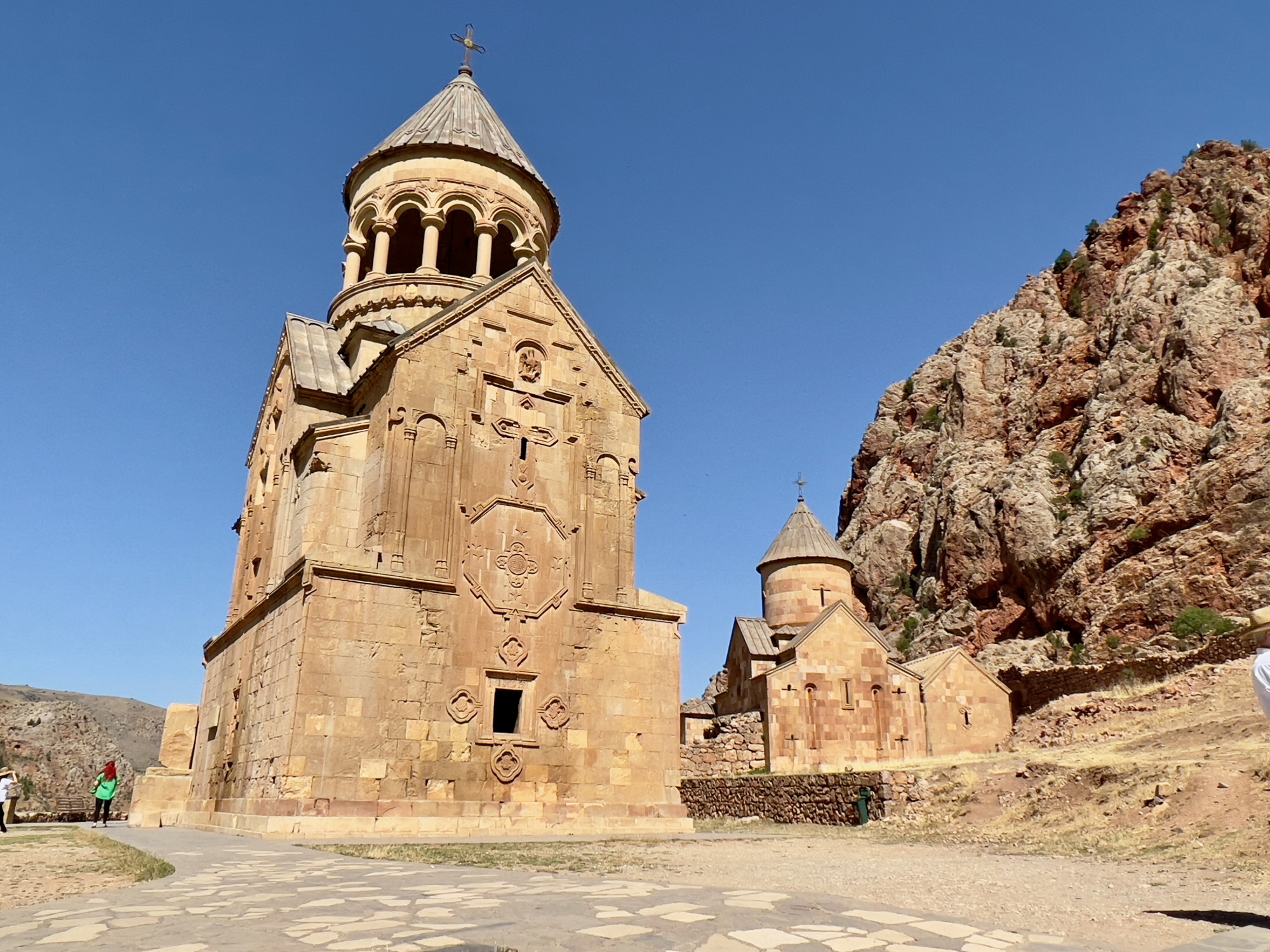
But a short drive back to the nearby village of Yeghegnadzor, one of five where the Areni grape is still grown, the Old Bridge Winery welcomes all comers to a cool glass-fronted space with views across vines to spiny ridges.
Places are set with glasses for four wines, amid several kinds of herb-laden cheese, olives, sun-dried tomatoes and much more – merely the overture to a marvellous multicourse meal, from local gazpacho to freshly baked pastries.
Each wine is carefully introduced with detailed tasting notes, from a flowery and refreshing white made from the native Voskehat grape, perfect for a day of 35 degrees Celsius (95 degrees Fahrenheit) heat, to two vintages of the Areni red.
These are medium- to full-bodied, with plenty of fruit – complex enough for enthusiasts to write paragraphs about, but for everyone else a simple pleasure just to drink.
Take a trip through Georgia’s 8,000-year organic wine history
Soviet planning designated Georgia, to the north, as the republic that would make wine, while Armenia was to produce brandy, fortified wines and sweet wines.
But a revival of traditional Armenian winemaking is under way, dozens of small-scale producers working with more than 400 indigenous grape varieties little known outside Armenia.
Specialist tour company 2492 invests in developing knowledge of local food and wine history, and its non-profit arm assists producers in building tasting rooms and other projects so that as tourism grows, more of its revenues will stay in the villages.
Everything that was linked to wine was either diminished or disappeared. We lost a lot of grape varietiesArtem Parseghyan of Trinity Canyon Vineyards on the Soviet era in Armenia
Bilingual United States-educated guide Kyle Khandikian drives small groups up into the hills above Areni village on a Wild Food Adventure, to introduce Norayr Grigoryan.
The winemaker stands in an apricot orchard at a table laden with cheese-stuffed roasted peppers and other delicacies, ladling out fruit-laden glasses of a delicious sangria made with local dry red wine and brandy.
In 1994, Grigoryan’s father co-founded Areni Vineyards, the first private winemaking company to be established in Armenia after the collapse of the Soviet Union, three years earlier.
We walk together a little way downhill to one of his company’s two vineyards, about 1,100 metres (3,600 feet) above sea level, and thought by some winemakers to be too low and too warm.
“But if you produce the grapes here you can do harvesting in the beginning of September, not in the end of September like European countries and like most of Armenians do,” he explains.
7 unsung wine-producing countries to visit, from Georgia to China and India
The rocky hillside is represented in the pleasant mineral notes of the wines Grigoryan offers for tasting. Rocks are removed from between the rows of vines and placed directly underneath them, absorbing the heat of the sun and retaining it in the ground at night, helping the vines to grow faster.
As dusk approaches, Grigoryan’s sister-in-law, Mariam Simonyan, brings a series of dishes to a table illuminated by strings of lights and set among the vines.
There’s trout wrapped in thin, roti-like lavash bread, and a richly textured hummus with added pumpkin and pumpkin seeds, adapting a recipe introduced by Armenians returning from exile in Lebanon.

There’s a tarragon salad that’s a local speciality, the herb mixed with grapes and horats panir, a goat’s cheese aged in buried clay pots like the wine – the ancient method Grigoryan and colleagues have returned to using, although only half-burying the karases, he explains, as that makes them easier to remove and clean.
The vines among which we sit appear everywhere, not only in a series of refreshing wine pairings of Voskehat, Areni and other grapes, but in vine wood powering the barbecue, the leaves used as decorations on some dishes, and Simonyan’s tolma, a relative of the more familiar Greek dolmades – rolled vine leaves stuffed with tender beef cooked with dried fruit and served with garlic yogurt.
Like many other vineyards, Trinity Canyon, in Aghavnadzor village, displays modern versions of the karases seen in the Areni-1 cave, although chief winemaker Artem Parseghyan says winemaking knowledge was lost during the Soviet era.

“During this 100 years everything that was linked to wine was either diminished or disappeared. We lost a lot of grape varieties that were not used for cognac, so people were not growing it.”
The skill of making the larger, 1,000-litre karases also vanished, he says.
“At the moment we have to find them in villagers’ houses, and restore them for use. And we actively use them. It’s not just a decoration, it’s an active fermenter.”
Armenia, next great hiking destination, offers surprises and challenges
The vineyard was started by three enthusiasts in 2013 as more of a hobby, he says, producing only 5,000 bottles at a friend’s place. But in 2016 they built a “garage winery” and now produce 55,000 bottles with 12 labels.
On a tour introducing the winemaking process, the orderly spaces with their shiny pressing, bottling and labelling machines, and rows of oak casks, seem anything but casual.
The small production is of mostly premium wines, but there’s also an eagerness to help smaller start-up growers with their production, and a keenness to experiment with Areni grapes taken from different terroirs.
“We try to see how the soil affects the style of the wine,” says Parseghyan, “and it turns out that Areni is one of those varieties that expresses the soil qualities, the elevation, the slope, and so on, really amazingly.” This is demonstrated in the tasting that follows.
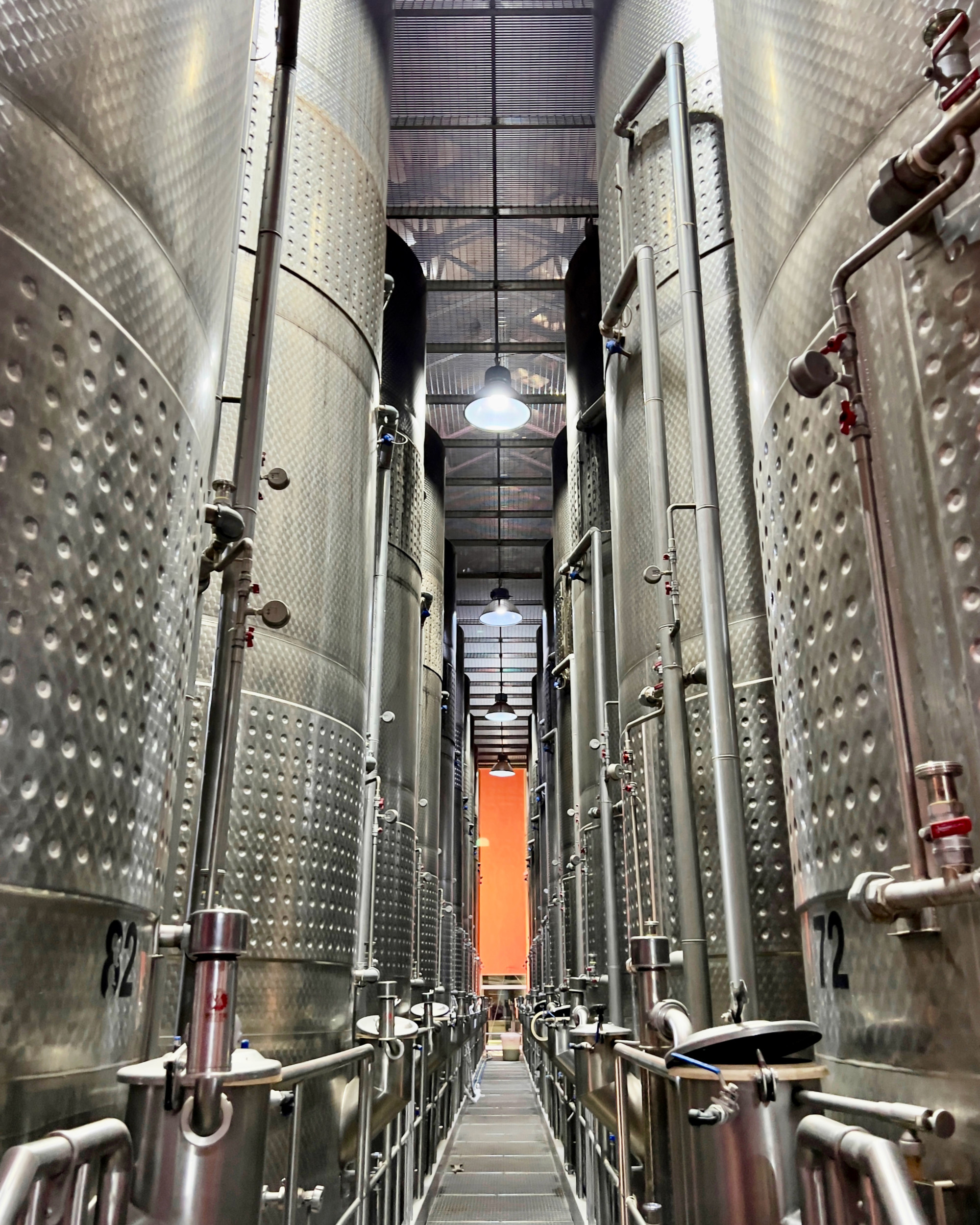
Back on the fringes of Yerevan there’s finally a maker of wine in significant volume. The Armenia Wine Company produces 6.5 million bottles annually, more than half of it organic.
The smartly modern factory buildings, attractively tiled in the local red-and-black volcanic stone called tuff, are at odds with the domesticity of the Vayots Dzor producers.
Here, there’s an artful museum to Armenian winemaking history, with a spiralling ramp leading underground past racks of bottles to explanations of how irrigation systems built as early as the 9th century BC helped the vines survive Armenia’s 300 sunny days a year, and how ancient Greek historian and military leader Xenophon wrote in praise of Armenian wine 26 centuries ago.
Quantity has not led to loss in quality, and the Areni red here is memorably good, with notes of black pepper and cherry.

The Takar extra brut, a Méthode Champenoise sparkling white made from the Kangun grape, might easily supplant Prosecco and cava on everyone’s summer drinking list if only it could be made in sufficient volumes.
As the museum explains, Armenian wines were historically exported in goatskins tied to rafts floated down the Euphrates river, but today little production reaches the outside world.
If, like Ararat, the wines won’t come to you, you’ll just have to go to them.

